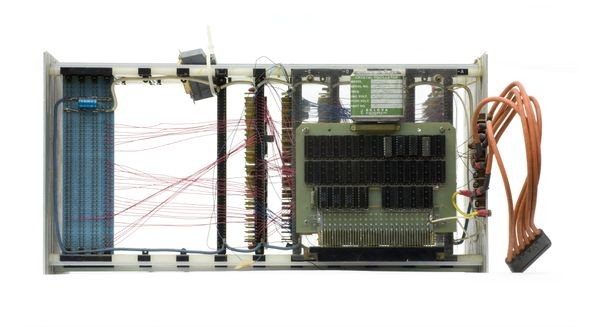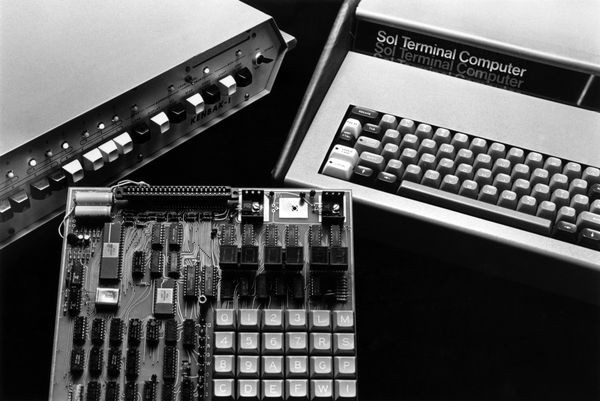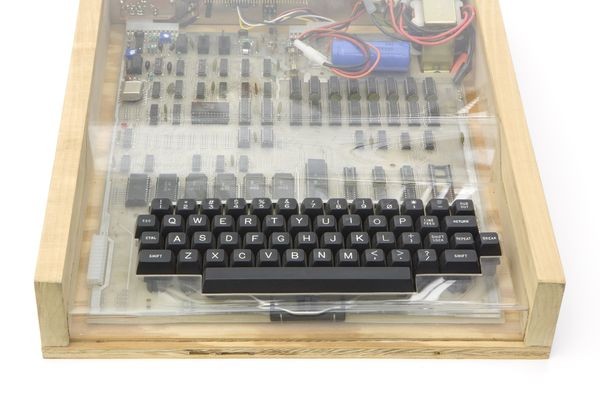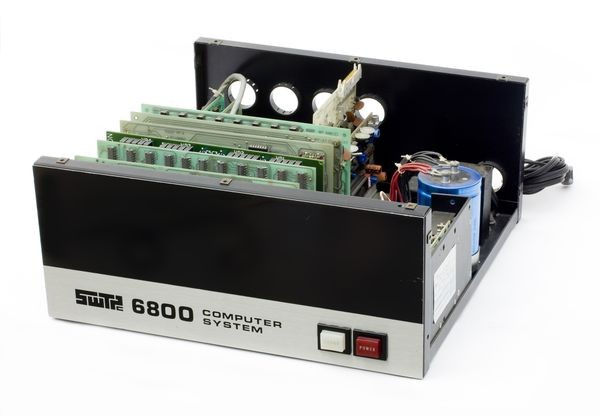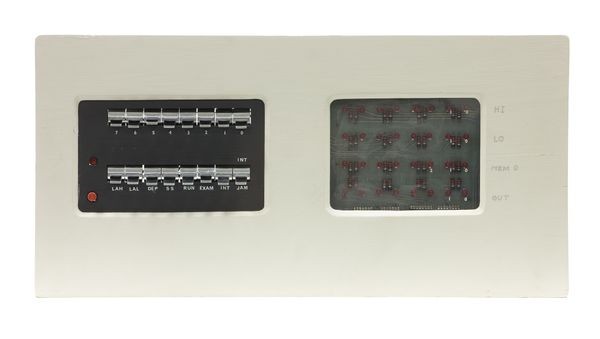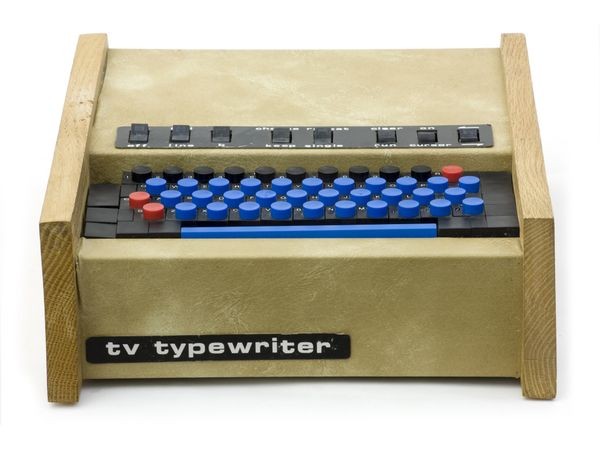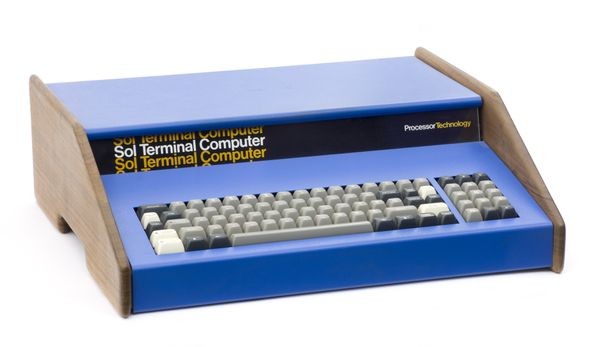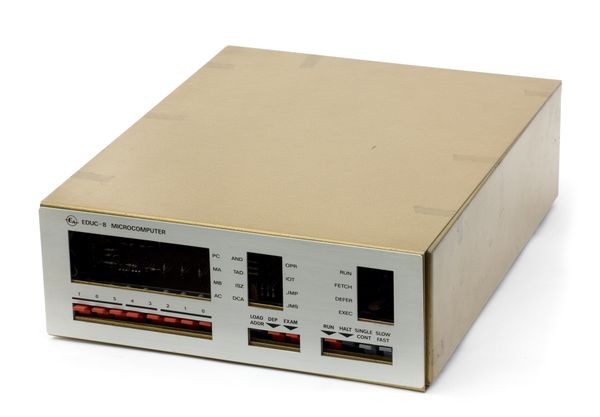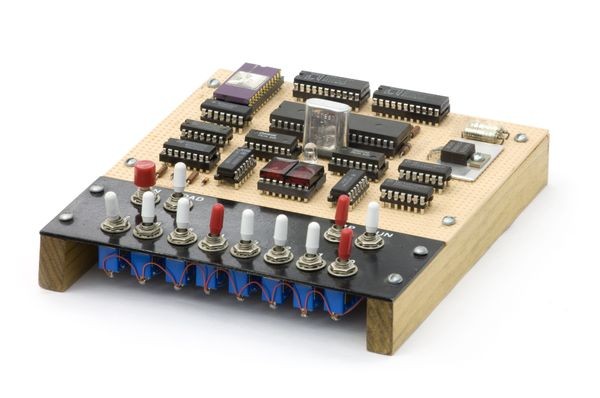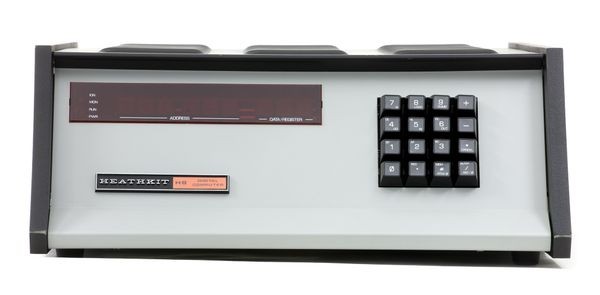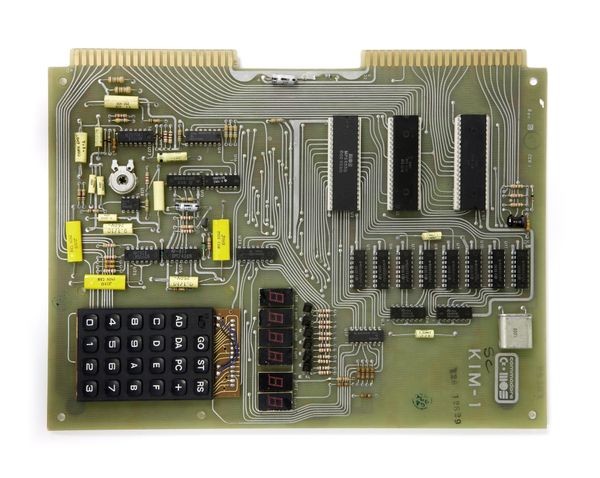Doing It Yourself
8008 Homebrew Microcomputer
Many hobbyists used the newly introduced microprocessor to create their own personal computers. Steve Roberts’ microcomputer used the Intel 8008 chip. Roberts was known later for BEHEMOTH, a bicycle that was a portable computing platform.
Doing It Yourself
Personal computers started off quite literally as personal, with hobbyists cobbling together their own machine in garages, dorms, and basements. Intel’s 8080 microprocessor in 1974 made it even easier for individuals to build computers.
Creating your own computer wasn’t for the fainthearted however. Enthusiasts, often working from kits, formed clubs to share tips, scoured electronics magazines, tinkered into the night—and loved every exciting minute.
I think it's fair to say that personal computers have become the most empowering tool we've ever created. They're tools of communication, they're tools of creativity, and they can be shaped by their user.
Early personal computers
Three of the earliest personal computers of the “homebrew” era are shown here: the Kenbak-1; Sol Terminal Computer; and Quest Electronics Super Elf.
View Artifact DetailOhio Scientific Model 600
The Model 600, also called the Superboard II, was a single-board computer with an integrated keyboard and 4K of static RAM. It was among the most affordable of early hobbyist computers, selling completely assembled for under $300.
View Artifact DetailSWTPC 6800
Southwest Technical Products based its computer kits on the Motorola 6800 and, later, the 6809. Of the dozens of different SWTP kits available, the 6800 proved the most popular.
View Artifact DetailMark-8
This “Do-It-Yourself” kit using the Intel 8008 microprocessor was the cover feature of Radio-Electronics in July 1974 – six months before the Altair 8800 was in Popular Electronics. You could get plans for $5, or blank circuit boards for $50.
View Artifact DetailHomebrew Computer Club newsletter, Volume 2, Issue 14, p.7
The Club’s newsletter provided a way for hobbyists to connect with each other, share information, and buy computer components. The large industrial electronic distributors made it difficult for individuals to buy the latest gadgets for their projects in small quantities.
View Artifact DetailTVT-1 TV Typewriter prototype
Don Lancaster developed the TV Typewriter as a low-cost terminal for home use. It could display two pages of text on a television screen. Lancaster thought it could be used to show news, stock quotations, time, and weather.
View Artifact DetailSol Terminal Computer
The Sol Terminal Computer designed by Lee Felsenstein sold as a kit for $995, or pre-assembled for $2,129. The Sol was originally conceived as a front-end terminal for timesharing systems, but became a full-fledged computer on its own.
View Artifact DetailEDUC-8 kit computer
Kit computers were popular with hobbyists who could solder. Electronics Australia magazine published 13 articles starting in 1974 describing how to build an EDUC-8 with 256 bytes of memory, no microprocessor and a central processing unit built out of transistor-transistor logic (TTL) integrated circuits.
View Artifact DetailCOSMAC ELF
RCA engineer Joseph A. Weisbecker designed the COSMAC ELF as a primitive hobbyist computer using the RCA COSMAC CDP-1802 8-bit microprocessor. Tom Pittman’s “Tiny Basic” could be used to write small BASIC programs.
View Artifact DetailHeathkit H8
Heathkit made electronics kits for hobbyists — not just computer kits, but also radios, televisions, stereos and test equipment. This H8 ran the CP/M operating system.
View Artifact DetailKIM-1
Chuck Peddle designed the KIM-1 so engineers could experiment with the 6502 microprocessor, but it quickly found fans in the hobbyist community. The fully-assembled computer with keyboard and display was only $245.
View Artifact Detail